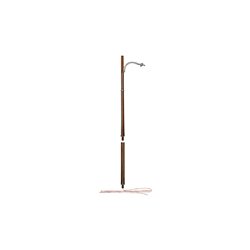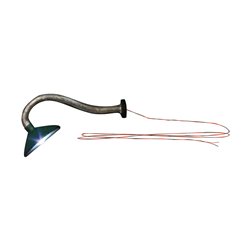Static grass puffer bottles work by manually charging model grass fibres with static electricity. When the charged...
No products
Product successfully added to your shopping cart
There are 0 items in your cart. There is 1 item in your cart.
Search Tips
How can I easily model working streetlamps?
There are a few options you can consider when it comes to modelling working streetlamps:
LED streetlamps: LED streetlamps are a popular choice for model railways as they are energy-efficient and produce minimal heat and are a good low-cost option. They are easy to install and can be powered by a separate battery or by the layout's power supply. To make them work, it is a relatively simple process of adding wires to connect the LED streetlamps to the power source and a switch to turn them on and off. The wires can either be supplied directly to the lights in question from underneath the baseboard or can be run across the top and hidden by scene elements such as foliage, buildings or pavements.
Fibre optics: Another option is to use fibre optics to create the effect of working streetlamps. This involves running a fibre optic cable from a central light source to each individual streetlamp. When the light source is turned on, the fibre optic cable will transmit the light to the streetlamp, creating the appearance of a working lamp. This method requires more work and skill to install but the result can be very striking and realistic.
Battery-powered streetlamps: Battery-powered streetlamps are a simple and easy option for model railways and as such are a good option for beginners to consider. They are powered by small batteries and can be easily turned on and off using a switch or remote control. They come in various sizes and styles, making it easy to find options that will match the era and theme of the layout in question.
Whichever method is chosen, it is important to ensure that the streetlamps are properly installed and wired to avoid any safety hazards that could result in damage to the layout. With a bit of planning and creativity, a modeller can easily add the realistic touch of working streetlamps to their layout.
Click here to receive the tips weekly in your mailbox. You can unsubscribe at any time.










